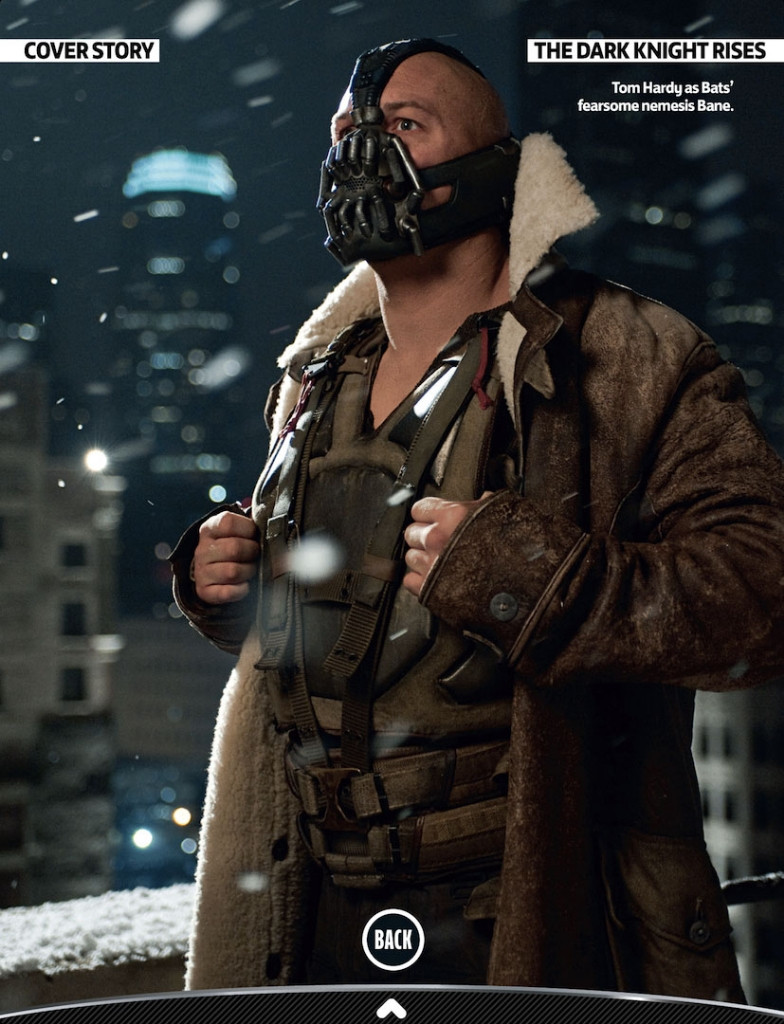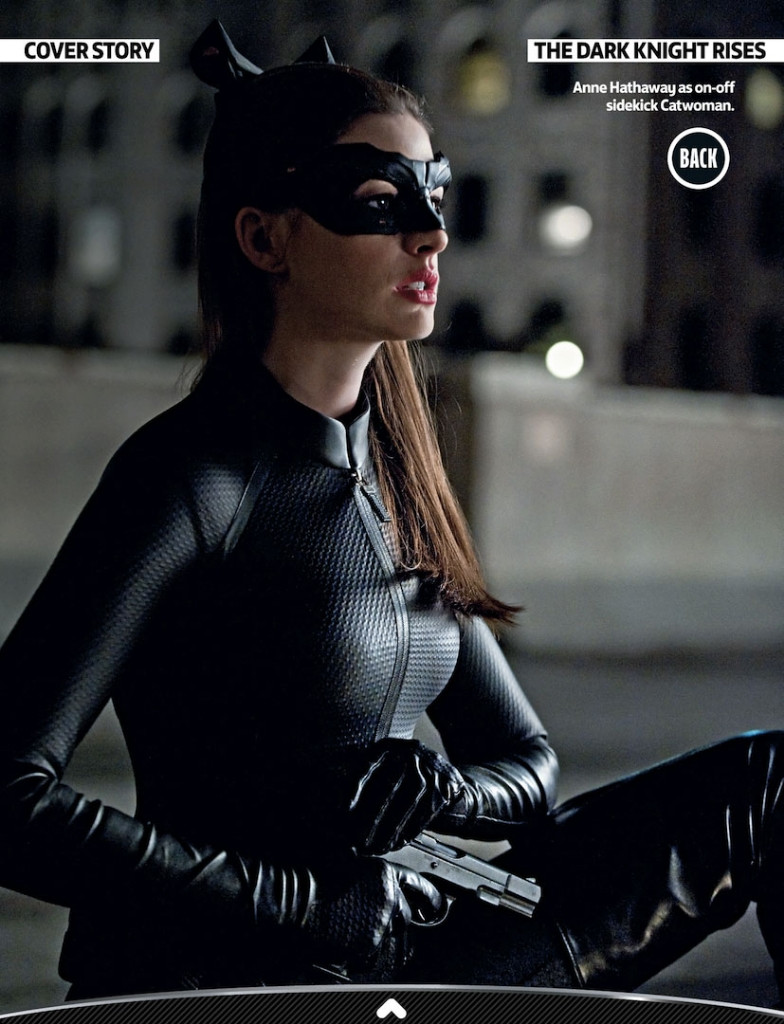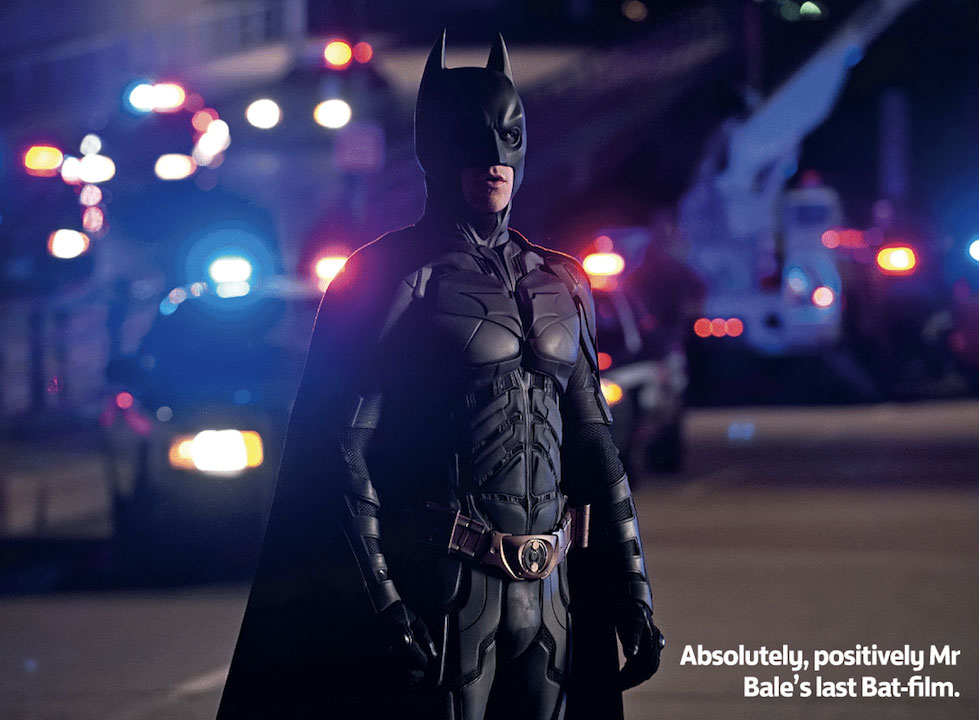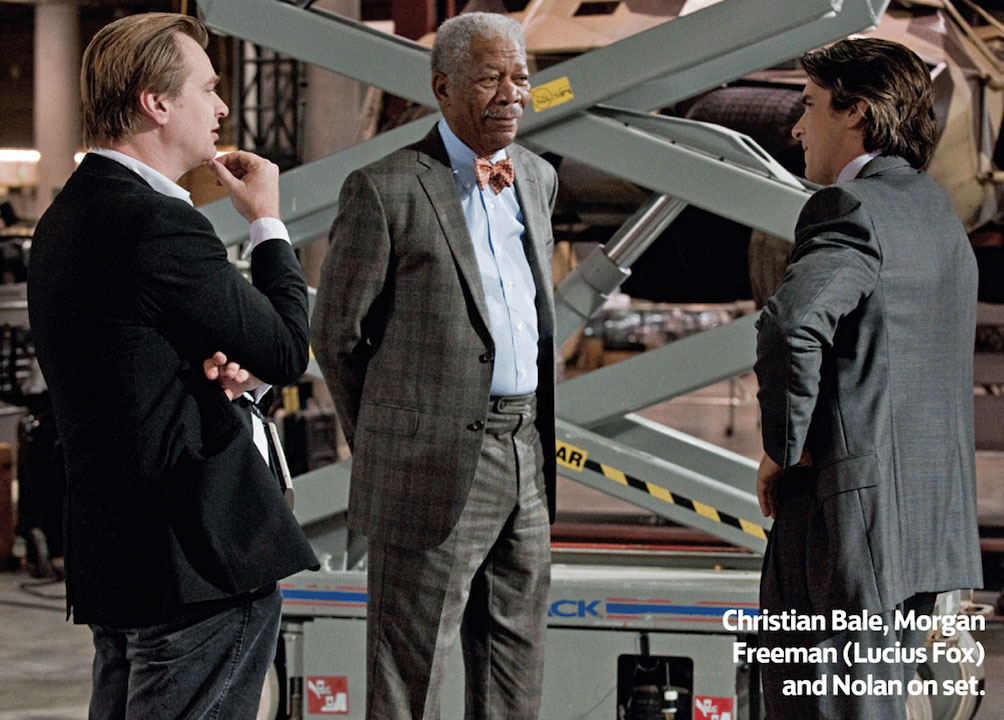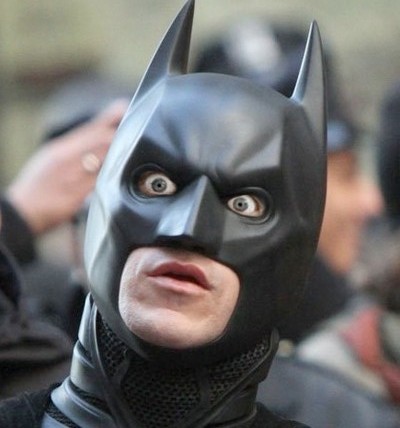“The Dark Knight reached an enormous audience,” says Christopher Nolan who remains a triple threat on The Dark Knight Rises (as director/co-writer/co-producer). “Far beyond our expectations.”
“We feel a tremendous challenge and responsibility to finish our story. We have to give the audience something they haven’t seen before, but also fulfill their expectations of what they enjoyed in the first two films. That’s the tricky balance with a sequel.”
Tackling this was a concern at the script stage, reveals Nolan. He and his co-storytellers – Jonathan Nolan and David S Goyer – looked to keep the fresh in proportion to the familiar. “I think we found a way to expand on what we’ve done before while taking the audience some places they’re not really expecting.”
Geographically speaking, TDKR spins its yarn across three continents, with shooting taking place in the US (Los Angeles, New York, Pittsburgh), the UK (London, Nottingham, Glasgow) and India. The globe-hopping was all to do with holding true to one of the rules of sequel-dom that is rarely shunned: go larger. “With a sequel, there is always the challenge of trying to meet or indeed exceed expectations,” says Nolan. “And some of those are based on the size, scale, and world of the film. We traveled to many different places because we wanted to give it a broader canvas.”
The Dark Knight’s return began with a few days’ shooting in the imposing Mehrangarh Fort in Jodhpur, India. The way Christian Bale tells it, they started at the deep end. “Jodhpur was quite nuts,” remembers the star. With temperatures sizzling to 120 degrees, mild delirium set in. “You do start to feel a bit loopy,” Bale says. “There were funny old conversations at the end of the day.” Wryly, he adds: “I liked that the costume department packed some nice parkas for us to wear – in case it got nippy…”
“BRUCE WAYNE has always had this need, this drive to take action because of the tragedy that befell him.”
“He’s not in the healthiest of places, in many ways,” says Bale of his now-reclusive character.
If the theme of Batman Begins was fear, and The Dark Knight was a meditation on chaos, is TDKR all about pain? “That’s constant throughout,” admits Bale. “But I think it’s more about him feeling the consequences of a life that’s entirely directed by pain, and holding onto that pain, and just how long he can do that. It’s about making the decision to continue [being Batman] in order to maybe self-destruct, or whether he can find some kind of rebirth, to be himself. There’s a certain amount of reflection.”
Which isn’t to say we’re in for yawning stretches of Bruce brooding in the Bat-cave. “Chris is very good at recognizing the kind of movie that we’re making, that we’re not making a little character piece,” asserts Bale. “There’s no reason why you can’t have a substantial amount of character in it, but we’re not going to go so far that people say, “This is no longer the excitement that I’m looking for.”
“I would say that in terms of brutality, this one exceeds the last one,” reveals Bale. “This is the first episode that Batman’s ever physically been taken.”
“BANE is a brute,” says Emma Thomas, naming the thorn in Batman’s side. “I think what’s great about this villain is that The Joker is all about mind games and messing with people, whereas Bane is about physical strength. We’re giving Batman someone truly worthy of him. It’s not just brute force. He’s really switched on.”
Bale concurs: “There’s true belief and ideology there.”
How did Tom Hardy attain his bulk? “Eating entire villages of chickens. I started I was about 160-something pounds. When I was done I was 190. You lift weights. You eat. You lift some more weights. You don’t run anywhere because if you do cardio, you drop weight. So it’s really good for heart attacks!”
Is his mask uncomfortable? “It’s not as bad as you might think. You just put it on. Work out where your drool goes. That’s it. Mask work is good fun. This one wasn’t painful; there was the stunt mask and there was the up-close one for the sexy glam shots.”
“I will, when I build certain characters, take a soupcon of different things,” Hardy explains looking up from the spirally doodle he’s been doing. “Like Kermit the Frog. I’ll put a bit of Kermit in there. I’ll take Robert De Niro from Taxi Driver, mix him up with animals and different characters, add a voice and then go home. I know my guy. He has a lot of people in it.”
“No, there’s no Kermit in Bane,” he laughs. “Absolutely ____ing not!”
“CATWOMAN is an incredible role,” Anne Hathaway reminds TF. “It’s one of the most famous comic-book characters for a woman. But, also, it’s Catwoman in this franchise.” It looks like Nolan’s on a course to honor the moral ambiguity that defines the character at her best. “It’s hard to talk about Selina Kyle because she’s intensely private and mysterious. She has her own ethics, which can involve doing things other people might consider questionable. I’m sure if you were to talk to her, she would be able to explain them to you.”
Combining stunt training with dance choreography - for that all-important feline grace – its Hathaway’s most physical role since the spy games of Get Smart. She found it “somewhat overwhelming” but here enthusiasm didn’t wane. “There were some days when I was wearing the catsuit for a long time and I had to fight 15 guys, and I just wanted to shout from the rooftops how excited I am.” She vividly describes Nolan as “like Hitchcock with an automatic”. “Chris is so intelligent and his instincts are dead on. He understands lighting. He understands pace. He understands writing. He understands costumes, for God’s sake!”
Nolan’s not one to regard his players as cattle. “He prioritizes the acting in a way that’s really rare for such a high-scale, spectacular production,” marvels Joseph Gordon-Levitt, new to the saga as John Blake. “That even amid all these things that are going on he made sure that the actors have what they need to create an honest performance, an honest moment. I think that’s a big part why audiences love his movies so much, because they don’t feel like just a bunch of fireworks. It feels like real stories, real people.”
Nolan’s Bat-movies have captured the imagination by not getting too fanciful. “We put a lot of time into the early designs ideas because we’ve created a more realistic idea of what a superhero film can be. It was important to us to look at the gadgets and vehicles through that lens. They have to walk that line between spectacle and credibility.”
There’ll be new kit - not least the trilogy’s first flying Bat-vehicle – “some quit startling things”, reckons Nolan. “We try never to lose sight of the balance between the technology he uses and his basic humanity –the drive and commitment to justice.”
Nolan’s notions of artistic integrity receive a new, unique focus in TDKR. Where most modern franchises are loath to close the door TDKR has been touted from the off as the final curtain for the Nolan-Batman. “It’s the end of an era. For me, personally, and for Batman,” Bale states.
Bats will be back, suited and rebooted before too long. But you get the sense that no one wants to waste the gargantuan goodwill and critical kudos banked by the Dark Knight trilogy on cheap cop-outs or rushed resolutions. Reassuringly, Nolan’s been plotting his endgame for a while.
“Our telling of the Batman legend has always been centered on Bruce Wayne’s story. We somewhat left the audience hanging with the last film in terms of Bruce’s story, and we want to bring it full circle and have a complete tale. We have a great ending we’ve been wanting to tell for some years now. We’re just thrilled to have been able to bring our story around to it’s conclusion.”






